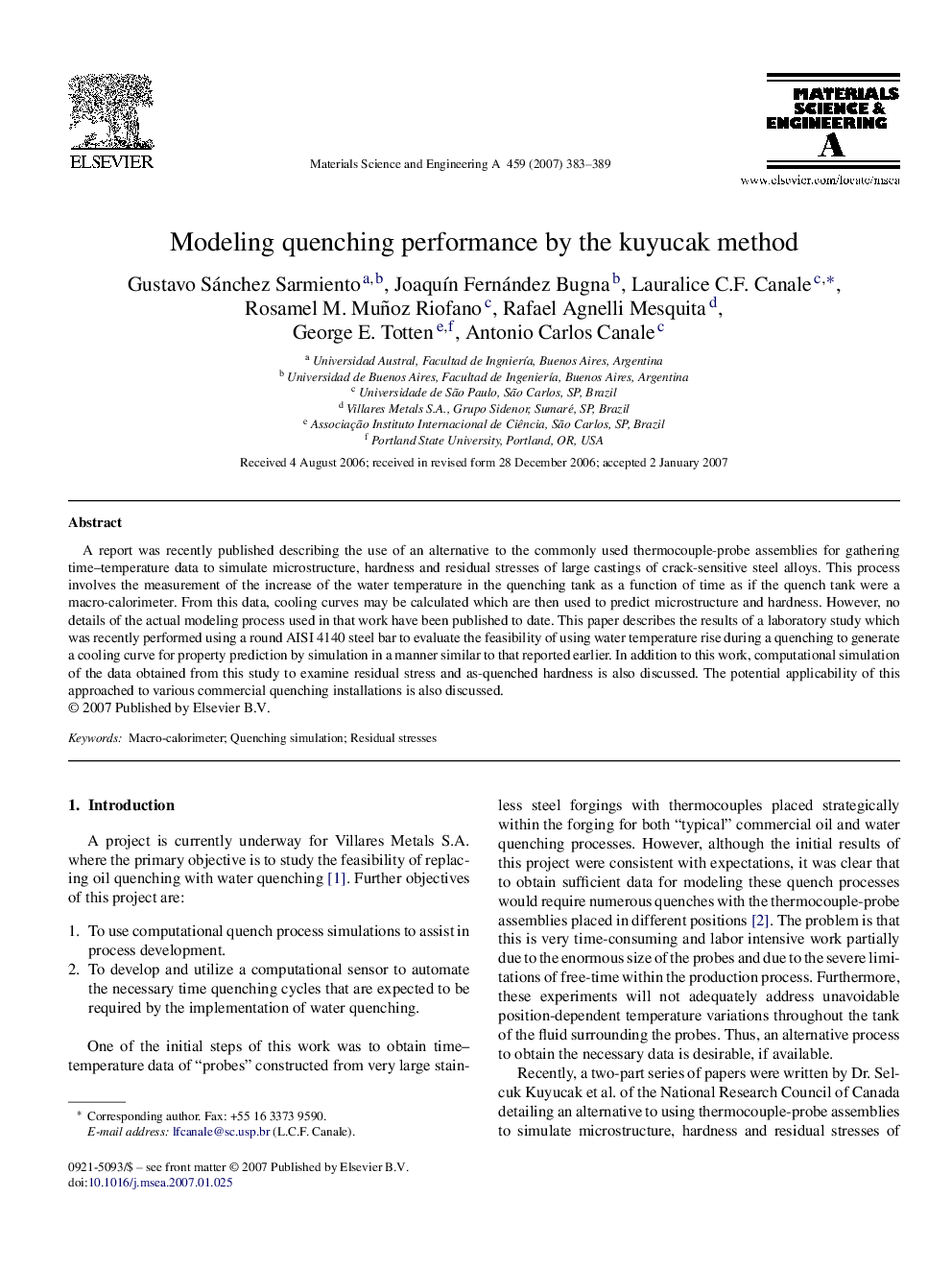| Article ID | Journal | Published Year | Pages | File Type |
|---|---|---|---|---|
| 1583889 | Materials Science and Engineering: A | 2007 | 7 Pages |
A report was recently published describing the use of an alternative to the commonly used thermocouple-probe assemblies for gathering time–temperature data to simulate microstructure, hardness and residual stresses of large castings of crack-sensitive steel alloys. This process involves the measurement of the increase of the water temperature in the quenching tank as a function of time as if the quench tank were a macro-calorimeter. From this data, cooling curves may be calculated which are then used to predict microstructure and hardness. However, no details of the actual modeling process used in that work have been published to date. This paper describes the results of a laboratory study which was recently performed using a round AISI 4140 steel bar to evaluate the feasibility of using water temperature rise during a quenching to generate a cooling curve for property prediction by simulation in a manner similar to that reported earlier. In addition to this work, computational simulation of the data obtained from this study to examine residual stress and as-quenched hardness is also discussed. The potential applicability of this approached to various commercial quenching installations is also discussed.
